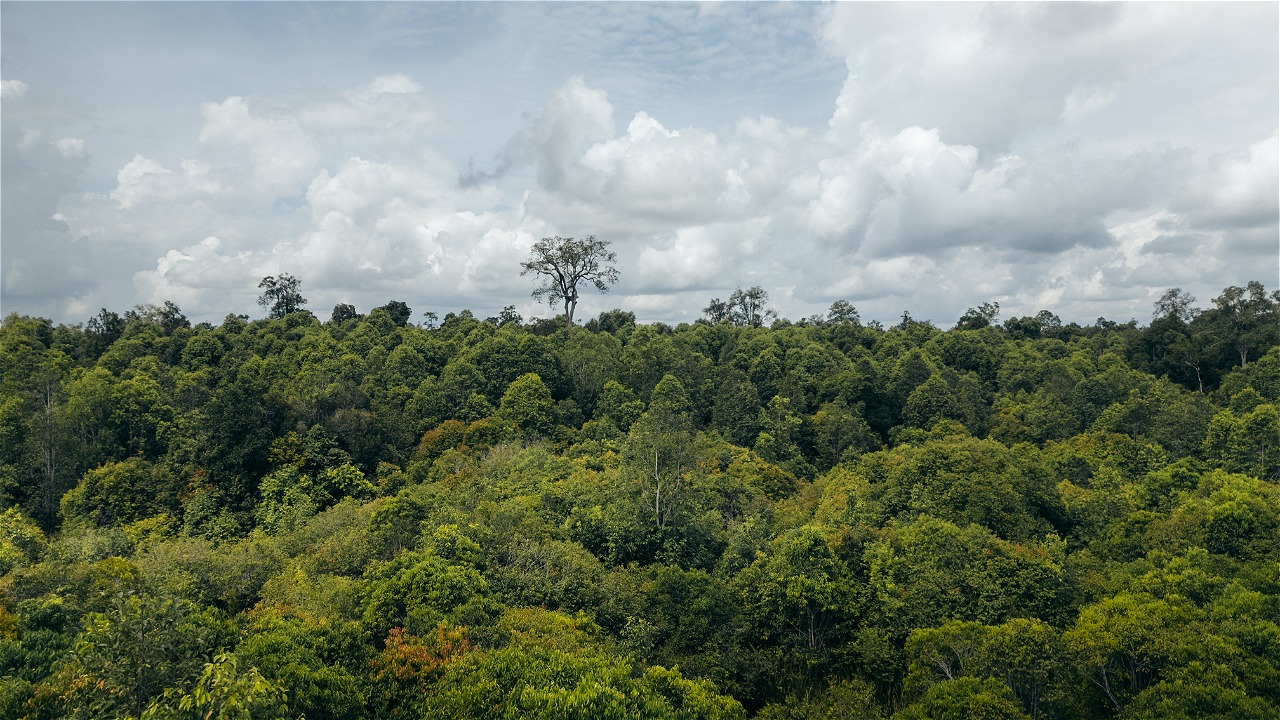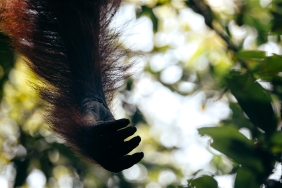TRACKING RHINOS IN KALIMANTAN
By: Saipul Hidayat Siagian (Front Liner Training Officer WWF-Indonesia)
In 2013, the conservation world was shocked by the discovery of rhinos in Kalimantan by the WWF-Indonesia team. In fact, in the last few decades, the existence of rhinos in Kalimantan has been declared extinct. Starting from the story of the Dayak people, a joint monitoring team between WWF-Indonesia, local government, partners and the community tried to trace the traces of rhinos in Kalimantan. They found puddles and rubbing of rhino bodies on tree trunks. The findings were followed up by installing camera traps around the puddles. After three months the cameras were installed, visual results were obtained of the presence of rhinos in Kalimantan.
Trying to trace the rhino trail in Kalimantan, in early March, I accompanied the Metro TV 360 program team to come directly to the field and take a closer look at the struggles of rhino conservationists in Kalimantan. We arrived at Sepinggan Airport Balikpapan and met with Arif Data Kusuma (West Kutai Project Leader) and Wiwin Efendi (East & North Kalimantan Program Manager) for a discussion.
The struggle of rhino conservationists is not easy. To reach the location of the combined camp (which cannot be mentioned for security reasons -Red), we needed about 13 hours of travel. The patrol's camp was very simple, with a blue plastic tarp roof and wooden frame. Inside the tent, several people slept on wooden velbeds and plastic sacks on the muddy ground. It just so happened that some members of the joint patrol team were sleeping and others were on guard and in the kitchen preparing food for the patrol team's breakfast. We also rested on several empty velbeds that had been prepared.
The next morning, we were awakened by the sound of birds and the sound of the busy preparations of the joint patrol team. The joint patrol team consisted of members of the police, KSDA forest rangers, district forest service staff and the community. The patrol team was divided into two so that the area could be monitored optimally.
After breakfast, the 360 team and I followed the patrol team by tracing the timber company road. Occasionally some members saw the path between the bushes. Suddenly the team found an animal snare made of plastic mine. The snare was examined and found to be 5 cm in size. "These snares are deliberately set with a small diameter because the targets are deer and pigs. Yesterday we found one with a diameter of 10 cm. Well, if the size is 10 cm, it means the target is a rhino," said Pak Mus, one of the members of the joint patrol from the community. We also found wild boar and deer footprints along the road. One of the officers from the East Kalimantan BKSDA explained to us that when they find a dead animal that has been caught in a snare, the patrol team will go to the snare owner and the customary chief to explain that the snare they set could harm the rhino if the size is 10 cm.
The 360 Metro TV team and I then parted ways with the joint patrol team. We took a 4x4 car to the nearest dropping point of the rhino monitoring team. The journey to the dropping point was exciting as we traveled through muddy company roads and crossed tree trunk bridges and bush alleys along the way. From the dropping point, we continued on foot for 3 hours to the monitoring camp. The march was guided by Temet (Coordinator of Rhino Monitoring in Kalimantan) and Sugeng (photographer and camera trap installer). The journey was grueling. We had to walk under a stand of trees, walk down a steep slope, then climb at a slope of 50 to 70 degrees. We also crossed a river via a wooden and slippery bridge. It turns out that the struggle of rhino conservationists in Kalimantan is truly extraordinary.
When we arrived at the monitoring camp in the middle of the forest, we were welcomed by two members of the monitoring team. We stayed overnight at the camp to prepare ourselves for the next morning's shooting.
In the morning, after a briefing, we followed the monitoring team into the forest. Our journey to trace the rhino's footprints was treated to findings of rhino presence in the form of twists and remnants of tree trunks where rhinos had eaten. After taking a break, Sugeng spotted a 21cm rhino footprint. Sugeng explained the characteristics of rhino footprints to the 360 Metro TV team. Coincidentally, a tree trunk with a rhino horn incision was also found near the footprint. After measuring and marking the footprint and horn on the tree, the team continued their journey. As we crossed the river, Temet noticed a mound of boli (rhino dung) on the riverbank. When approached, it turned out to be a rhino boli. The boli still looked round and brownish in color.
On that occasion, the monitoring team also installed a camera trap near the river. Jay, a member of the patrol team, explained how the camera trap worked and how it was installed. Jay is one of the community youth trained by WWF to conduct and use rhino monitoring equipment in Kalimantan. That's a little story of my trip to join the rhino monitoring team.
The footage of rhino conservationists who are willing to live in minimal conditions for an uncertain period of time from this trip can be seen at http://video.metrotvnews.com/360/GNlGZjVK-pelestari-badak.





